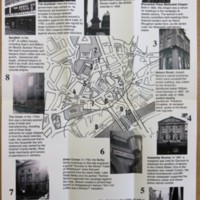
The Roots Initiative
identity on tyne is a group for writers and artists of colour in North-East England. The Roots Initiative was their response to the bicentenary, in partnership with the Literary and Philosophical Society. The writer Sheree Mack examined the region's involvement in the slave trade and the abolition movement through historical documents, creative writing and poetry. A heritage walk around Newcastle highlighted the events, individuals and places involved in the slave trade, slavery and the abolition movement in the North-East.
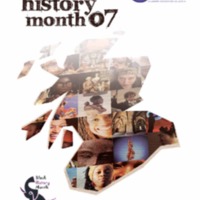
Black History Month 07
Glasgow Anti Racist Alliance (GARA) organised a programme of events for Black History Month in October 2007 with a particular focus on the bicentenary and engaging people in the importance of Black history. GARA were supported by Glasgow City Council Education Services and Culture and Sport Glasgow. Events included talks at the Hunterian Museum, interactive exhibits at the Glasgow Science Centre and film showings, capoeira and African drumming workshops at the Glasgow Film Theatre. Sugar & Spice Sunday on 14 October marked the bicentenary with a festival of commemoration and celebration through films and events. GARA also hosted Black History Tours around Glasgow to explore the city's hidden slavery history.
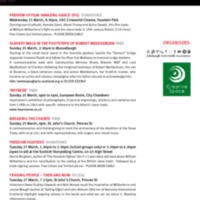
Marking the 200th anniversary of the Abolition of the Slave Trade
A programme of events to mark the bicentenary was organised by Edinburgh Inter-Faith Association. This included a slavery walk in the footsteps of Robert Wedderburn, a commemoration and thanksgiving service at St John's Church in Edinburgh, and a debate and discussion on the theme 'Trading People - Then and Now'.
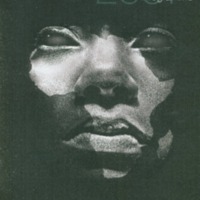
2007 Bicentenary for the Abolition of the Slave Trade Act at the National Maritime Museum
The National Maritime Museum marked the bicentenary with a range of initiatives and events including a new exhibition, a film season, poetry, music, debates, and new publications. A new permanent gallery opened at the museum in winter 2007 exploring Britain's Atlantic empire. A catalogue of slavery-related images, artefacts and documents from the collections of the museum, 'Representing Slavery', was published. The museum also devised a transatlantic slavery trail around Greenwich.
The National Maritime Museum hosted a number of events throughout 2007. The theme of the weekend 23-25 March was 'And still I rise', marked with a series of activities, performances and discussion. On August 23, International Day for the Remembrance of the Slave Trade and its Abolition, the ‘Freedom Festival: Contemporary Commemoration’ event saw a programme of creative events and performances exploring themes around the heritage of enslavement. The museum also offered a range of learning experiences based on its collections. For example, in November, a study session, 'Roots of Resistance: Abolition 1807' examined the roots of resistance and the abolition movement through talks by curators and contemporary artists. Activities for families were based on themes of freedom and carnival. 'The Big Conversation 2007' was a programme of debate and showcasing of diverse projects undertaken by students around the country, organised by the Understanding Slavery Initiative and the Department for Children, Schools and Families.
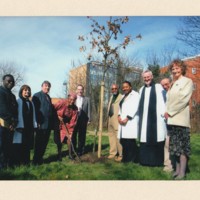
Events led by Leyton and Leytonstone Historical Society
The Leyton and Leytonstone Historical Society led a number of commemorative events to mark the bicentenary. In March 2007 an oak tree was planted in the churchyard of St John’s Church Leytonstone. At the ceremony there were a number of speeches, after which community nurse and local campaigner Mrs Zena Edmund-Charles was invited to plant the commemorative tree. There was also an art exhibition at St John's featuring artefacts and mementos of the period. A commemorative ‘Freedom Walk’ was led by local historian Peter Ashan, following a route around Leyton, Leytonstone and Walthamstow. The exhibition was shown again during Black History Month, alongside a video story of Olaudah Equiano.
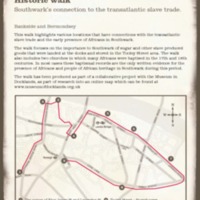
Southwark and Abolition
Southwark Council created two online resources to commemorate the bicentenary. A historic walk, produced in collaboration with the Museum of London Docklands, highlighted locations connected with the slave trade and the early presence of Africans in Southwark. A timeline detailed key dates and events that led to the transatlantic slave trade, including Southwark's local connections to the trade and its abolition. The Cuming Museum in Southwark also held an exhibition, 'Lost and Found'.
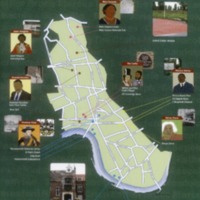
Remembering Slavery in Hammersmith and Fulham
Hammersmith and Fulham Urban Studies Centre is a voluntary educational organisation which offers opportunities to children and young people to learn about the local urban environment. The online curriculum resource 'Remembering Slavery' aimed to inform teaching and learning about the transatlantic slave trade by tracing the links of people and places in Hammersmith and Fulham to enslavement, the slave trade and its abolition. It explored the lives of enslaved Africans and their descendants, detailing their experiences and contributions in the local area. The resource aimed to encourage teachers to develop a locally-based Black history focus across curriculum programmes. It consisted of resource guides and animated films across four broad time frames: pre-Victorian, Victorians, Britain in the 1930s and 40s, and Britain since 1948.
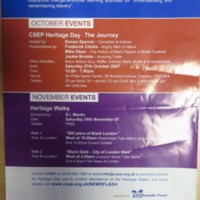
Newsflash: Heritage Chronicles
The Croydon Supplementary Education Project (CSEP) offers community-based learning initiatives to Black and Ethnic Minority communities in Croydon. Newsflash: Heritage Chronicles was a range of free interactive intergenerational learning activities for understanding and remembering slavery. The programme included heritage days, heritage walks with historian S. I. Martin, and information and research to dispel myths about Africa before the arrival of the Europeans, such as the featured sheet about the Ghana, Mali and Songhai Empires.
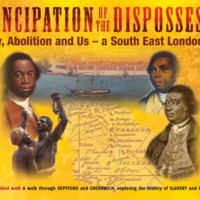
Emancipation of the Dispossessed: Slavery, Abolition and Us - a South East London angle
Emancipation of the Dispossessed was a local community project exploring the local history of Deptford and the surrounding areas and the connections with the transatlantic slave trade. Community groups and students from Lewisham College worked with theatre educators to research and develop 'Blood Sugar', a promenade performance through the Queen's House, Greenwich. The play, written and directed by John Turner, tells the story of slavery and abolition from a local angle, and the script was built around first-hand and eyewitness accounts, campaign pamphlets and reports to parliament. The project also produced learning resources aimed at Key Stage 3 History and Citizenship.
A guided walk explored Deptford’s links to the history of the transatlantic slave trade, uncovering stories of some of the local people who played an important role in the beginnings of the slave trade or the campaign for its abolition. London was an important slave trading port before Bristol and Liverpool dominated the trade. The trade and British colonies were protected by the Royal Navy, whose ships were built and prepared for voyages at the Royal Dockyards at Deptford.
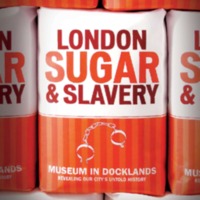
London, Sugar and Slavery
The Museum of London Docklands opened the London, Sugar and Slavery gallery in 2007, and it remains a permanent exhibition. The museum, housed in an old sugar warehouse on London’s West India Dock, retold the narrative of the transatlantic slave trade from the perspective of London, once the fourth largest slaving port in the world. Through personal accounts, film, music, interactive exhibits and over 140 objects, the exhibition looks at the various stages of the transatlantic slave trade, including life and trade on the West India Dock, and conditions for the enslaved on the Middle Passage and the Caribbean plantations. The final section of the gallery focuses on the legacies of the slave trade for British society today. Community collaborations also helped shape the gallery.
The museum also created a walking trail for the local area, highlighting key architectural features and buildings that had a role in the transatlantic slave trade. The Slave Map of London was developed in collaboration with three London museums: the Cuming Museum in Southwark, Bruce Castle Museum in Haringey and Fulham Palace Museum. Users navigated an online map to discover over 100 different locations throughout London which played a part in the transatlantic slave trade and the fight to end it. A schools programme that accompanied the opening of the exhibition included drama performances and workshops. Courses that ran alongside the exhibition in 2007 included ‘Resistance and Achievement: the story of African and Caribbean people in Britain’, in partnership with Middlesex University.
In 2018, the museum reflected on the 10 year anniversary of London, Sugar and Slavery with a workshop to explore the significance of the gallery, with contributions from artists, museum practitioners and emerging artists.
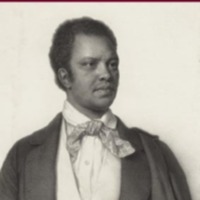
Events to mark the bicentenary in the City of Westminster
In 2007 Westminster City Council supported a programme of events in the libraries, galleries and archives of the area, including films, walks and exhibitions, designed to provide opportunities to learn about the culture of Westminster's communities. Highlights included guided heritage walks with historian S. I. Martin, exhibitions of images from the Royal Geographical Society in Paddington Library, Maida Vale Library and Westminster Reference Library, and film screenings (in partnership with 100 Black Men of London). A partnership between the City of Westminster Archives Centre, Tate Britain, Parliamentary Archives, National Gallery and National Portrait Gallery produced a heritage trail 'On the Road to Abolition: Ending the British Slave Trade', which takes in key sites, events and individuals in Westminster relating to the slave trade, between Trafalgar Square and Pimlico. In celebration of Black History Month, Westminster City Council produced a booklet, 'Black History in Westminster', detailing some of the borough's influential Black residents.
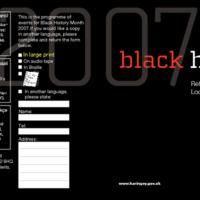
Haringey Council Black History Month
In consultation with the Black community in Haringey, the programme for Black History Month 2007 included many events to commemorate the bicentenary of the Abolition Act. Several took place at the Marcus Garvey Library in Tottenham, including poetry writing workshops, African drumming and dance workshops, and an exhibition and presentations led by Anti-Slavery International. There were several events to mark the bicentenary, including by Bedale House Supported Housing Scheme (featuring tenants' video diaries, a short film, poetry and guest speakers) and by Efiba Arts, supported by The Bridge New Deal for Communities. Haringey Council ran a poetry competition on the theme of slavery for young people aged 13-15. The winning entries were published in a pamphlet distributed to schools and libraries in the borough. Historian S. I. Martin led a guided tour of Haringey's places relating to the abolition of the slave trade. There was also a series of seminars by Robin Walker addressing 'Transatlantic Enslavement: What really happened?'.
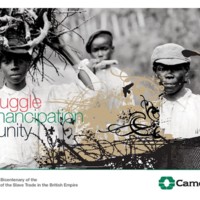
Struggle, Emancipation and Unity
The year-long programme of commemorative events from Camden Council was put together in consultation with the 1807-2007 Taskforce of local African and Caribbean community leaders. The key to these events was remembering slavery through the resistance of Africans, their celebration in their liberation and their unity in tackling present-day inequalities. Camden’s 18th and 19th Century Slavery Trail was created around the area. In eight stops, it explored the lives of men and women connected to the slave trade who lived and worked in the London Borough of Camden. The Resistance Film Season, in partnership with the British Museum, explored the legacy of the slave trade through a mixture of contemporary and classic films. Other events also included local exhibitions, poetry readings, debates and talks.
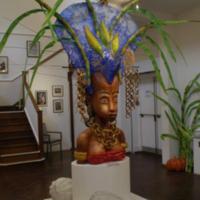
Parallel Views: Black History in Richmond
The Parallel Views exhibition and its associated community engagement programme explored the relevance of the bicentenary for communities in the London Borough of Richmond upon Thames, uncovering local associations with slavery and its abolition. It also told the parallel story of twin town Richmond, Virginia, USA, to broaden understanding of the transatlantic slave trade and the impact of its demise. The exhibition examined evidence of individuals of African origin who had come to Richmond, and residents with financial links to slavery and the slave trade, and to abolitionism. A film piece by choreographer and dance historian Dr Rodreguez King-Dorset explored the use of dance within the free Black community in London during the era of abolition. A display of contemporary artwork responded to the ideas of the exhibition. A sculpture by carnival artist Carl Gabriel linked consumers in Richmond and the conditions of production of slave-grown crops. The design was inspired by a series of workshops with local families. Artist-led workshops for children and young people led to the creation of a carnival costume piece which was included in the exhibition.
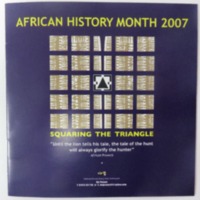
African History Month 2007: Squaring the Triangle
Squaring the Triangle was the theme of African History Month 2007 in Suffolk. The programme was co-ordinated by the Nia Project (a cultural, arts and heritage project) and explored the history and legacy of slavery through film, literature, exhibition, music and debate. The theme of Squaring the Triangle was underpinned by the African proverb, ‘Until the Lion tells his tale the tale of the hunt will always glorify the hunter’. Highlights included the Nia Memorial Lecture, given by the producer-director Pam Solomon-Fraser. Nubian Films short season looked at the current legacy of slavery and the Diaspora of African peoples. Talks, workshops and debates covered issues such as reparations, retribution, resistance, and educational guidelines for parents on how to discuss the African slave trade with children. Special recognition was given in the programme to Ghana’s 50th anniversary as an independent state. There were heritage walks around Ipswich to uncover some of the cultural connections with Africa, the Caribbean and Suffolk. A Youth Day Conference hosted by the Zimbabwe Youth brought together young people from the community to use music and poetry to explore their ideas on the legacy of the slave trade. Historian Maureen James and representatives from Suffolk County Council led pupils from local schools in researching the anti-slavery movements, with particular reference to the Clarkson family.
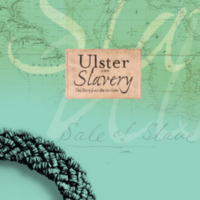
Hidden Connections: Ulster and Slavery 1807-2007
The Hidden Connections exhibition was a result of partnership between the Public Record Office of Northern Ireland (PRONI) and the Linen Hall Library in Belfast. The exhibition explored Ulster's links with slavery after 1807 via people, events and places, and looked at both the pro and anti-slavery debates in Northern Ireland. It drew on documents from PRONI’s archives, artefacts from the Ulster Museum and contemporary books and pamphlets from the Linen Hall Library and elsewhere. After its launch at Linen Hall Library, the exhibition toured Northern Ireland, travelling to Down Museum, the Harbour Museum in Derry, Lisburn City Library and the Ulster American Folk Park.
The wider Hidden Connections programme featured workshops exploring archival sources, performances and lectures by leading scholars. There was a panel discussion on ‘Slavery Now’, a walking tour of Belfast sites associated with the slavery issue, and a boat trip on the Lagan focusing on the port’s links with slave colonies. Gerry McLaughlin’s ‘Blood sugar’ is a drama documentary devoted to the literature of slavery, music and song. 'Freedom and Liberty' was the theme of the UK-wide Archives Awareness Event. PRONI organised special events and produced a catalogue, 'Ulster and Slavery', listing the references to slavery to be found in the archive.
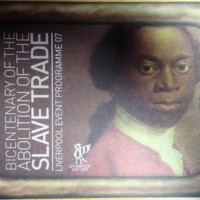
Liverpool Event Programme 07
Liverpool hosted a city-wide programme of activities and projects to commemorate the bicentenary, as part of events to mark the city's 800th birthday. The events aimed to celebrate the African Diaspora and support works by artists of African descent. They included: LEAP, an annual contemporary dance festival featuring African dance companies; a performance of Mighty Diamonds - Reggae Legends at the Philharmonic Hall; the Roscoe Lectures; the Brouhaha International Carnival, celebrating resistance, rebellion and abolition; the Africa Oyé Music Festival at Sefton Park; the Bound exhibition at Open Eye Gallery, showing works representing personal perspectives on the physical and psychological impact of slavery on humanity; and many other lectures and debates. There was also a slavery trail around the city.
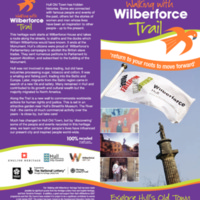
Walking with Wilberforce Heritage Trail
Part of Wilberforce 2007, the Walking with Wilberforce Heritage Trail is a journey through Hull's Old Town, via twelve important landmarks related to William Wilberforce and the theme of freedom. Along the trail is the Humanitarian Wall, at the Wilberforce Institute for the study of Slavery and Emancipation, constructed in 2006 to commemorate worldwide actions for human rights and justice. The ceramic markers, inspired by the Sankofa bird, were designed especially for the trail by three community and art groups from Hull's Africa Forum, from Hull College ceramic students and from local schools working in collaboration with two local ceramic artists. The trail was launched with a celebration of African culture led by students from Hull schools and the local Congolese community.
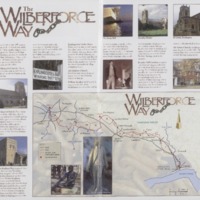
The Wilberforce Way
This sixty-mile walking trail was devised to commemorate the bicentenary by East Riding Local Strategic Partnership's Community Cohesion Forum and the Yorkshire and Humber Faiths Forum. The trail connects some of the important places in the life of the abolitionist William Wilberforce: it starts in Hull (where Wilberforce was born), connects with Pocklington in the East Riding of Yorkshire (where he attended school) and finishes at York (where he was declared MP for the County of Yorkshire).
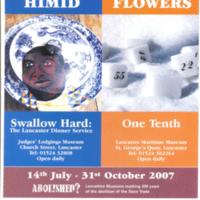
Abolished? Lancashire Museums marking 200 years of the abolition of the Slave Trade
Lancaster was the UK's fourth largest slaving port at the height of the transatlantic slave trade in the 18th century. Lancashire Museums worked with a range of partners to raise awareness of this largely hidden history - first from 2002 through STAMP (the Slave Trade Arts Memorial Project), and in 2007 through Abolished? This bicentenary project consisted of exhibitions, creative writing, radio broadcasts, and schools projects, one of which produced a Slavery Town Trail that explored some of the buildings made possible by the wealth the slave trade brought to Lancaster. At the heart of the project were commissioned installations and interventions by artists Lubaina Himid ('Swallow Hard: The Lancaster Dinner Service' at the Judge's Lodgings) and Sue Flowers ('One Tenth' at Lancaster Maritime Museum). Both were accompanied by outreach programmes and workshops with local schools. A touring exhibition was produced in partnership with Anti-Slavery International and Lancashire County Council Youth and Community, which looked at transatlantic slavery and modern day slavery. The exhibition toured throughout Lancashire.